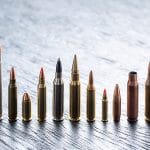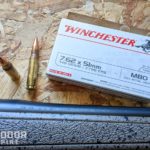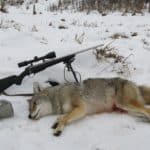My least favorite part of the shooting hobby has to be dealing with ever-inflating ammo prices.
Unfortunately, unless you’re collecting vintage firearms, you’ll almost never shoot or are one of those hunters who shoots three shots a box the day before hunting season to make sure you’re still on paper. Your main shooting expense will be ammo.
Even if you’re a slow shooter and only put one box of ammo through your rifle every month, you’ll still go through hundreds of rounds per year. This will exceed your rifle’s cost within a few years.
And who only shoots a single box of ammo per trip?
My minimum shooting averages one magazine’s worth of ammo per week. With the standard capacity magazine of a modern sporting rifle like an AR-15, that’s 1,560 rounds per year.
At the current cheapest prices, .223 or 7.62x39m plinking ammo, both would cost me $550 per year. The cheapest hunting cartridge is generally .308 Winchester, costing $800 per year. Both lose dramatically to .22 Long Rifle at less than $150 for a year’s supply!
The Overall Cheapest Rifle Caliber
| Cartridge | Budget CPR | Match or Hunting CPR | Reloaded CPR |
| .22 Long Rifle | $0.08 | $0.10 | N/A (Rimfire) |
| .17 HMR | $0.35 | $0.40 | N/A (Rimfire) |
| .223 Remington | $0.33 | $0.42 | $0.43 |
| .22-250 Remington | $1.50 | $1.85 | $0.49 |
| .243 Winchester | $1.33 | $1.46 | $0.50 |
| .260 Remington | $1.85 | $2.02 | $0.56 |
| .270 Winchester | $1.16 | $1.42 | $0.61 |
| .30-30 Winchester | $1.50 | $1.75 | $0.52 |
| .300 Blackout | $0.60 | $1.50 | $0.44 |
| .308 Winchester | $0.51 | $1.00 | $0.57 |
| .30-06 Springfield | $1.30 | $1.50 | $0.62 |
| .300 Winchester Magnum | $1.74 | $1.74 | $0.69 |
| .338 Winchester Magnum | $2.95 | $5.00 | $1.03 |
| .45-70 Government | $2.65 | $2.96 | $0.76 |
| 6.5 Grendel | $0.65 | $1.75 | $0.51 |
| 6.5 Creedmoor | $2.00 | $2.00 | $0.57 |
| 7.62x39mm | $0.33 | $1.85 | $0.52 |
Note: Prices are from early 2022, aggregated from many websites and excluding remanufactured ammo. Reloaded prices based on starting loads of IMR 4895 powder for most cartridges.
The cheapest rifle caliber to shoot, by far, is .22 Long Rifle.
This venerable rimfire round is light and weak, so there’s little cost by way of raw materials. It’s also popular. Very popular. Which gives it an excellent economy of scale, further driving prices down.
$0.10 per round is my upper limit for plinking .22 lr, though it can be found down to about $0.08.
However, since it’s such a light, low-velocity cartridge, you can’t replace most rifles with a .22 lr version. Don’t go bear hunting or try to win a 1,000 shoot with .22!
This means we need to focus on other rounds to truly answer the question of what’s the cheapest rifle caliber to shoot.
Right now, it’s either .223/5.56×45, 7.62x39mm, or .308/7.62×51.
All of these benefits from a large supply and guaranteed consumption base. A round such as .30-30 Winchester will have a lower material cost than .308, but it can’t approach the same price levels because it’s not manufactured on such a large scale.
Note that this advantage dissolves when reloading enters the picture. The cost, for you, is basically just the materials cost.
So, you can reload even the rare cartridges for about as much as the common ones.
What Disciplines Can You Shoot Cheaply?
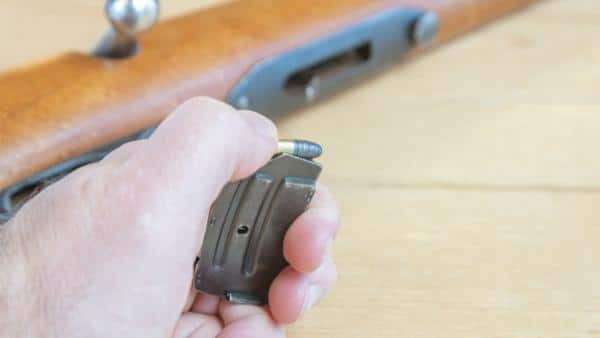
Certain shooting disciplines cannot be done “cheaply.”
You need to shoot match-grade ammo any time you want to maximize your rifle’s precision.
There’s no way around it. Cheaper ammo is just less accurate than more expensive ammo.
This makes Benchrest shooting, Precision Rifle Series, Bullseye/Precision Pistol, and other such competitions expensive to shoot no matter what.
Even your practice for these events should involve higher-quality ammo.
You can get away with mid-grade ammo for hunting, 3-gun competition, and many other disciplines. If “hits” are what’s essential, not minute-of-angle, then you don’t need to use the best stuff possible.
And, when practicing these disciplines, you can get by with cheap ammo, as long as it’s not too inconsistent.
For casual plinking, short-range target shooting, and drills where you’re focusing on speed rather than precision?
Use the cheapest ammo you can get for your gun that’ll still let it run.
What About Steel Cased Ammo?
There’s a trend toward steel cases for cheap ammo nowadays.
Some people shy away from steel cases, but I say, let them fly.
The main concern people have regarding using steel-cased ammo to save money is how it can accelerate barrel wear. (This is likely from the Eastern Bloc manufacturers using hotter burning powder, causing increased throat erosion, but I digress).
The cheapest brass-cased .223 I can find right now costs $0.08 more per round than steel-cased .223. This saves $80 per 1,000 rounds. AR-15 barrels can last for more than 4,000 rounds, more if you shoot slowly.
$320 saved is enough for two mid-grade replacement barrels.
So, yes, shooting steel-cased ammo still saves you money!
The Cheapest Practical Rifle Calibers
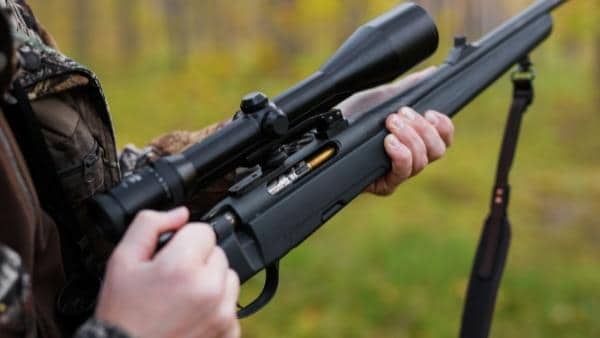
Most of the advice above applies to for-fun shooting.
Paper doesn’t care about what type of bullet you’re using, making cheap rifle shooting easy.
But what about those rifles which are for use against the live game?
You don’t want to cheap out when hunting or defending your life. You ALSO don’t want to get a gun that prices you out of being able to hunt.
A rifle I love is my Marlin 1895 GBL. However, it’s chambered in .45-70 Government. That gun’s practice ammo is $2.50 a round! Hunting ammo costs $3 per round or more, which means I don’t take it out much.
So, let’s look at some highly-effective cartridges that won’t bleed your wallet dry.
The Cheapest Rifle Caliber for Big Game Hunting
.308 Winchester wins for being the least-expensive big game hunting round. It’s just too common for any of the specialized hunting rounds to compete.
You can take almost any game in North America with a .308 rifle. Only the biggest animals shrug it off.
If you’re hunting a Grizzly, then your ammo costs are going to be a rounding error on your hunting cost spreadsheet.
Must-read: Best .308 Rifles Reviewed – Bolt-Action, Semi-Auto and Hunting Rifles
The Cheapest Rifle Caliber for Varmint Hunting
While I love small-caliber varmint loads such as .17 HMR and .22 Hornet, .223 Rem is exceedingly common and is, in fact, a varmint round.
It’s not the best varmint round, but it is the least expensive.
The Cheapest Rifle Caliber for Long Range Shooting
Low-volume, high-precision shooting muddles the discussion a bit when it comes to cheap rifle practice.
There’s no such thing as a cheap long-range load. Some are cheaper than others, though.
In my experience, 6.5 Grendel is the best long-range precision round for inexpensive shooting. 6.5 Creedmoor, another common long-range rifle round, always seems to be about $3-$15 more per box.
6mm ARC is about the same price but is less commonly available.
.223 match ammo exists and is cheaper still, but it’s not as long-ranged as these heavier calibers, so I still place 6.5 Grendel as the cheap long-range king.
Related: Best Rangefinders For Long Range Shooters: The Definitive Guide
The Cheapest Rifle Caliber for Self Defense
.223 wins here, too.
I favor .223 as a self-defense round for reasons I’ve covered before.
Price shouldn’t be a consideration for the actual loads you use to defend yourself. Get the best self-defense ammo you can then take advantage of cheap ammo to be well-practiced for if such a bad event comes to pass.
The Cheapest Rifle Caliber to Reload
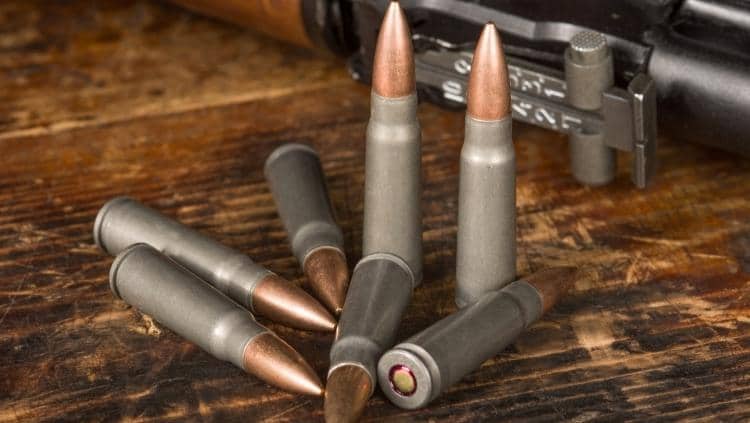
I remember when 7.62x39mm ammo was cheap enough, it cost you more to reload it than buying new ammo!
That’s not the case anymore.
For most cartridges, reloading equalizes costs.
.30-30 Win and 7.62x39mm both use .30 cal bullets, similar primers, and about as much powder. Provided you have empty cases, which are reusable and thus don’t shift the cost much, these two cartridges will cost about the same to reload.
Calibers are where costs change, though. Larger, heavier bullets tend to cost more than smaller, lighter ones, though bullet prices tend to be in bands.
For example, .358 caliber Hornady InterLock bullets are about $0.12 cheaper per unit than their .270 bullets.
And larger calibers require more powder as well, also increasing costs.
This means that the smallest caliber with the lightest powder load to achieve your goal will be the cheapest caliber for you to reload. This depends heavily on your desires.
For example, this is part of what led me to reload 6.5 Grendel instead of 6.5 Creedmoor for long-range shooting. They both use the same bullets, but my Grendel is cheaper to reload than the Creedmoor and is just as effective at the distances I’m comfortable shooting. If I wanted to push past 1,000 yards, then I’d upgrade to 6.5 Creedmoor.
However, for poking holes in paper, .224 bullets are almost always the cheapest. 60 gr .224 Hornady V-Max bullets cost the same as .20 gr .17 caliber bullets, for example. This makes .223 the cheapest rifle cartridge to reload.
Tips for Cheaper Rifle Shooting
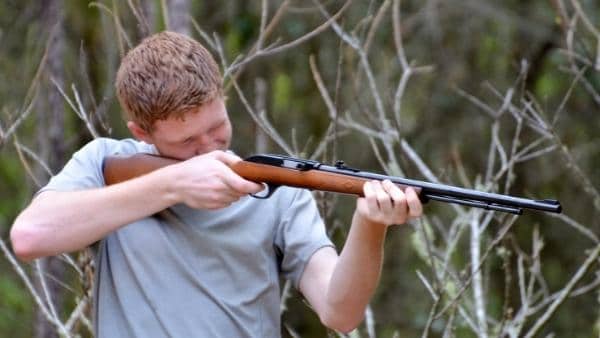
No matter how you spin it, high-volume shooting can be expensive. Here are some methods you can use to maximize your training without feeling like you’re throwing money into a bottomless pit.
#1 Dry Fire Practice
I can’t always get to the gun range. So long as I have access to my guns, though, I can get in some trigger time every day.
Except for recoil management, there’s very little practical difference between pulling the trigger on a full or empty chamber. Most of what makes you accurate—breath control, stance, and trigger control—can be practiced by dry firing your gun.
Careful observation while dry firing your gun can reveal any jerking and allow you to fix this problem before you develop a flinch. This will save you money with real ammo, too, as all the bullets will go where you want them to go.
Make sure your gun is completely unloaded before pulling the trigger, including the magazine. I even have a dedicated dry-fire mag with the spring and follower removed!
Failing to follow the basic rules of firearm safety will be more expensive than any range trip.
#2 Dry Fire Training Systems
Up your dry fire game by using a laser training system such as the LaserLyte Laser Trainer.
These systems make any instability in your aim more obvious. That dot can bounce all over the place!
You can also add targets that react to the laser, though this increases the initial expense.
#3 Use a .22 Long Rifle Adapter
Remember how .22 lr is much cheaper than even the crappiest, cheapest rifle cartridge?
If you have a specific type of gun, you can adapt it to use .22 lr.
I use a CMMG .22 Chamber Adapter, which replaces my AR-15’s bolt carrier group so I can use the cheap stuff while getting real trigger time with that rifle.
You can find .22 adapters for other guns, such as the Advantage Arms Glock 17/22 adapter, or pick up a dedicated .22 lr version.
#4 Accurize Your Cheap Ammo
If you need inexpensive long-range ammo but don’t have the components to load your own, you can apply the “Mexican Match” concept to make lower-quality ammo more accurate.
Much of a cartridge’s contribution to accuracy comes from consistency. Consistent powder throws consistent bullet weights consistent seating pressure.
And consistency is where they cut costs.
The original way of making your own “Mexican Match” ammo was to pull the bullet and replace it with a match bullet.
You can also dump all the powder into a container, measure it, and split it equally back into the primed cases. Wolf ammo can have a powder weight variance of over 5%! Just equalizing powder can be effective in making ammo more consistent.
#5 Have a Secondary Gun in an Uncommon Caliber
As we’ve seen in the past few years, the common cartridges can get bought out quickly. Then the price increases.
Less common cartridges will experience the same phenomenon but more slowly.
There was a time when I couldn’t find .223, 7.62x39mm, or .308, but I could find 6.5 Grendel—and for less than the inflated prices of those other rounds!
Grendel’s price eventually rose as well, but that was well after people with only .223 and .308 rifles cursed me for being able to find cheap ammo.
Conclusion
.22 LR is the cheapest ammo you can buy for a rifle, but it’s not the best choice for many shooters.
Even after prices have inflated, .223 and 7.62x39mm tend to jostle each other for the cheapest intermediate rifle ammo you can buy.
If you want a full-power rifle, then .308 is the cheapest choice.
6.5 Grendel is an excellent middling option; it’s more expensive than .223 but cheaper than .308 or .300 Blackout.
Don’t be that poorly-practiced hunter I mentioned back at the beginning, by the way.
Shooting is a skill and, like any skill, needs consistent practice for you to be effective.
Confidently placing your shot wherever you want will make you a better hunter and increase your chance of a swift one-shot kill that drops the deer where it stands with minimal damage to meat and hides.



